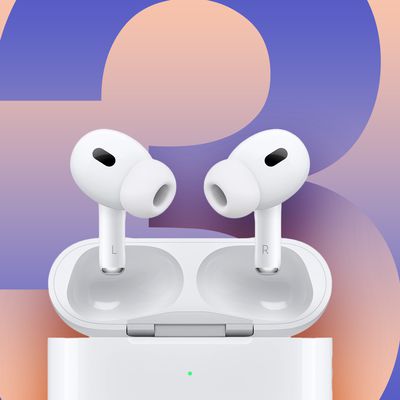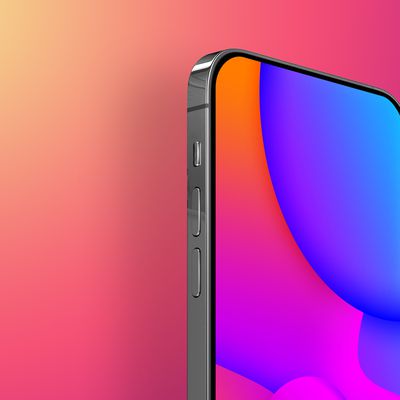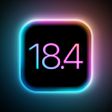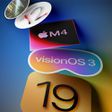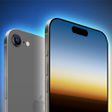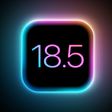Apple is known for its privacy policies that keep user data collected to a minimum, but the company has also worked to incorporate many safety features into its devices. From summoning help when you can't to making sure you're not being tracked or followed, the iPhone has tools that are meant to keep you safe.

We've rounded up some of the most important options that everyone should be reminded about.
Emergency SOS
If you're in danger or there's a medical emergency, the iPhone has ways to quickly summon help by automatically calling emergency services. The Emergency SOS feature will dial the local emergency helpline based on your location, so it's available even when you're traveling.
In the United States, for example, activating it dials 911. In the UK, it dials 999, and in Europe, 112. With Emergency SOS, you don't need to know the emergency number for the country you're in, which can be a relief when you just need help as soon as possible.
There are several setup options for Emergency SOS, so you can choose the one that works best for you. There are two automatic calling options where you can dial immediately by either holding the side button and a volume button together or pressing the side button five times in rapid succession.
There's also an option where you'll need to use a swipe to place the call, which eliminates accidental activations. Emergency SOS can be set up in the Emergency SOS section of the Settings app. Toggle on one of the two activation options if you want auto calling.
If you don't want auto calling, turn off both toggles. The gestures still work the same way, but using them will bring you to the iPhone shut down screen where you can use a single swipe to place an emergency call. Emergency SOS is always on and available even if you don't have the automatic options enabled.
Note: This screen for emergency services has another important function that's worth knowing about. It will lock your iPhone so that it won't unlock with Face ID, and your passcode will be needed to access your data. If you're ever asked to hand over your phone to someone, you can quickly use one of the two gestures to disable Face ID. In the U.S., you can't be compelled to provide your passcode to law enforcement. You can, however, be required to unlock your iPhone with a facial scan or fingerprint.
Emergency SOS will work over a cellular connection, Wi-Fi, and on the iPhone 14 or later, satellite if a standard connection is not available. Emergency SOS via Satellite will also work on a phone that does not have cellular service, but the auto calling features require a SIM. If you have emergency contacts set, they will be notified with a text message if you need to use Emergency SOS.
Medical ID
Medical ID provides your relevant medical information and emergency contacts to first responders if you're in an accident, so it's useful to keep it up to date and available.
It includes your name, age, allergies, and emergency contact numbers, along with a photo, language spoken, height, weight, blood type, medications, and medical conditions including pregnancy.
You can set up your own Medical ID in the Health app settings. Open up the Settings app, scroll down to Apps, look for the Health app, and tap into it. From there, tap into each category to add data. Alternatively, open the Health app, tap on your profile picture, and tap Medical ID.
If you're in an emergency situation and there's an unresponsive iPhone user, it's also good to know how to get to the Medical ID information. From the Lock Screen, swipe up to the Passcode interface, tap on Emergency, and then tap on Medical ID in the bottom left of the display. You can also press the side button five times, or hold the side button and the volume button together to get to the Medical ID interface.
Crash Detection
With the iPhone 14 or later, the gyroscope and accelerometer in the iPhone can detect a car crash, alerting emergency services. Crash Detection can have some false alarms and early on, there were problems when people were skiing or on rollercoasters, but Apple has worked to refine it.
Crash Detection is enabled automatically on the iPhone 14 or later, but you can double check that it's on by going to Emergency SOS in the Settings app and scrolling down to the "Call After Severe Crash" option.
If Crash Detection is activated, the iPhone will play an alarm and start a countdown before the call is placed, so there is time to cancel it if there's movement that causes the feature to detect a crash when there hasn't been one.
Location Sharing
With the Find My app and location sharing, you can share your location with trusted friends and family members. Location sharing can be good for peace of mind, because it ensures that someone always knows where you are. This isn't always desirable because you're not going to want to share your whereabouts with someone unsafe, but it's good to know about.
You can share your location for different lengths of time, including for an hour, until the end of the day, or indefinitely. One of the easiest ways to share your location with someone is to open up the Find My app, tap on the People tab, and then tap the "+" button to select a contact. You can also share from the Messages app and the Contacts app.
The Find My app's People tab will show you who you're sharing your location with so you can turn it off, but you can also go to the Privacy and Security section of the iPhone Settings app, tap on Location Services, and then select Share My Location to see who can view your location.
Check In
If you don't want to permanently share your location with someone, or you just want extra oversight when you're using a ride share service or taking a late night walk, you can use the Check In feature.
With Check In, you can choose a person that will see your current location, your intended destination, and the approximate time that it will take you to get there. Check In can also be tied to a workout, so that it's active while the workout is in progress, or it can be a simple timer that's not linked to a specific route.
If you're using Check In with a destination, it ends when you arrive. With a timer, it prompts you to respond within 15 minutes of when the timer ends to make sure you're okay, and with a workout, it sends a notification when the workout ends. If you do not arrive at your destination or tap a prompt when a timer ends, the person on the other end of the Check In procedure will get an alert.
From there, the person can see your starting location, the route you took, your current or most recent location, when you last unlocked your iPhone, or, if you have an Apple Watch, when it was removed. It also includes the connectivity status of your devices and battery level. Data is only shared if you do not respond to Check In prompts, and you can also choose to share a more limited amount of data that includes only your most recent location.
Check In is a Messages feature, and you can use it by choosing a conversation in the Messages app, tapping on the "+" button, and selecting Check In. To change the parameters, tap on the Edit button.
Safety Check
Safety Check is an important feature that walks you through all of the privacy settings on your iPhone, and it's worth using every now and then. It lets you know which people, apps, and devices can see your personal information like location.
Safety Check can be initiated by opening the Settings app, selecting Privacy and Security, and scrolling down to Safety Check. There is an Emergency Reset option, and a Manage Sharing and Access option.
Emergency Reset immediately resets the data sharing permissions of all of your apps, and it stops sharing your location both with people and apps. It's good in situations where a disgruntled partner or friend might be able to track you. Manage Sharing and Access is the option most people will want to use.
In this interface, the iPhone walks through what you are sharing with people, including location, photos, calendars, passwords, activity, home devices, notes, and more. You can see these settings on a person by person basis, or an overview of how many people have access to each category by tapping on the "Information" button.
You'll also be able to see what information you're sharing publicly through shared albums or notes, and which apps have access to your data.






